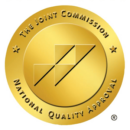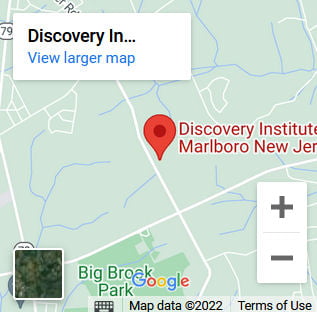The internet is flooded with what is considered to be “legal” and “safe” strategies to get high or produce mind-altering effects from the following drug materials:
- Man-made
- Synthetic
There are numerous gas stations and convenience stores that sell the above-mentioned substances under the likeness of the following which is typically labeled “not for human consumption” to avoid U.S. Food and Drug Administration (FDA) regulation :
- “Research chemicals”
- “Jewelry cleaner”
- “Herbal incense”
- “Plant food”
- “Potpurri”
The above-mentioned products might be abused frequently for their psychoactive, psychedelic, and euphoric effects. Most of these substances are manufactured and unregulated in illegal labs and imported often from China, and other countries are where the issue lies. The above-mentioned synthetic drugs come with unpredictable side effects and have been untested.
Hundreds of various chemical compounds might be moderately modified from a previous configuration to escape control or regulation by the Drug Enforcement Administration (DEA). The Synthetic Drug Abuse Prevention Act, which was passed in 2012, situated numerous synthetic compounds which are being abused for their psychoactive effects into Schedule I. Schedule I translates as it’s considered:
- Potentially addictive
- Dangerous
- No approved medicinal value
- Illegal in the United States
The Washington Post reported that over 500 designer drugs or synthetic drugs have been recognized in 2015.
What Are Synthetic Drugs?
The most common synthetic drugs are the following:
K2 Or Spice
K2 or Spice is also known as Skunk, Blaze, Bliss, and Yucatanfire. Fake weed or synthetic cannabinoids have an operating ingredient that exceeds potentially over 100 times more habit-forming than plant-based marijuana. Plant-based marijuana effectively binds to cannabinoid receptors in an individual’s brain. Forbes announced, plant-based marijuana produces a “high” that is extremely similar to marijuana containing:
- Altered perceptions
- Mellowing effects
- Depressant
Gravel Or Flakka
The active ingredient found in the above-mentioned examples of synthetic drugs is alpha-PVP. Alpha-PVP is a synthetic cathinone drug with hallucinogenic and stimulant effects. It might be a small grain, but it is mighty. In Broward County in Florida, there were over 300 Flakka abuse cases reported, in the first three months of 2015, as reported by the Washington Post.
Smiles, 2CI-NBOMe, And 2C-C-NBOMe
This hallucinogenic drug presents similar effects to LSD. It was reported by CNN that even a couple of salt-sized grains are sufficient enough to create a long-lasting “high”.
Bath Salts
These are stimulants which are synthetic cathinone and often include the following examples of synthetic drugs:
- Mephedrone
- Methylone
- MDPV
According to Science Direct, snorting bath salts might present to be similar to snorting ten lines of cocaine with only one dose. The areas that increase due to these synthetic drugs are:
- Body temperature
- Blood pressure
- Focus levels
- Energy levels
- Heart rates
Molly
This drug is a pure version of MDMA, (3,4-methylenedioxymethamphetamine) and ecstasy. These examples of synthetic drugs are mind-altering drugs that traffic in contorting the individual’s senses and acting as a stimulant. Molly is typically cut with other chemicals.
It was reported by CNN that only 13% of the Molly seized in New York contained MDMA between 2011 and 2015. Other synthetic drugs were commonly found instead such as MDPV, and methylone to name a few.
AMT, Foxy, Nexus, Blue Mystic, And DMV
These phenethylamines and tryptamines are considered psychoactive substances that might produce hallucinations that present more similar to those caused by mescaline and LSD. The Journal, Substance Use & Misuse reported that these synthetic drugs are abused commonly in a rave or club scene.
Synthetic drugs present to be more dangerous, unpredictable, and potent than many illicit drugs. It was reported by the American Association of Poison Control Centers (AAPCC) that more than 7,500 calls were taken in 2015 referring to adverse reactions to synthetic cannabinoids. It also published that there were 520 exposures in 2015 to bath salts.
Who Abuses Synthetic Drugs?
The internet has rapidly altered the way how synthetic drugs are abused and obtained. With simply the click of a few buttons, these normally legal and potentially dangerous “research chemicals” can be sent out to an individual’s doorstep. Even though this approach seems much easier and safer than having to seek out a stranger who peddles drugs in a dark alley, it’s still not the best way to go about living the most satisfying life.
Nowadays, people are also able to find new synthetic drugs related to trying and can browse drug forums. This might greatly appeal to a young audience specifically.
Social Work Today Journal published, 60% of their synthetic drug cases involved individuals who are 25 and younger. Synthetic drugs, specifically those that can act as stimulants and alter perceptions are normally most popular at raves and clubs. Addiction Science & Clinical Practice journal reported that young adults, essentially males ranging from their mid to late 20s, commonly utilized designer drugs. Individuals who are with lower income and single might be more prone to engaging in designer drug abuse. These synthetic drugs are extremely popular on college campuses.
It was reported by the Monitoring the Future (MTF) survey of 2014 that drug trends for students 8th, 10th, and 12th grade the following. When combined, only 5% of students in the above-mentioned grades have reported using synthetic marijuana in the month that led up to the survey. In 2011, synthetic marijuana was first reported.
Synthetic marijuana seemed to peak according to that year’s MTF Survey in 2012. It was the second most commonly abused drug behind marijuana in high schoolers who were surveyed, with an annual prevalence of use over 11% in this specific demographic. The actual use of synthetic marijuana has seemed to decline in recent years, possibly due to the following:
- New chemical compounds are being utilized instead
- The use of the new products haven’t been recorded
- Stricter regulations in place
As illicit laboratories create new synthetic drugs, it becomes more challenging for authorities to keep track for the following reasons:
- Record who might be using it in what quantities
- Ban them
The statistics regarding synthetic drugs might not be entirely accurate and are a bit skewed.
Are Synthetic Drugs Addictive?
Any products that are snorted, swallowed, smoked, inhaled, and injected have the potential of being addictive to individuals. They are meant to produce mind-altering effects that should be considered drugs even if they are marketed as other products such as “research chemicals” or technically legal. Once these drugs are abused by an individual, chemical changes are made in the brain relating to the following areas:
- Impulse Control
- Decision Making
- Pleasure
- Mood
Some of the drugs mentioned can distort a person’s senses and cause psychotic side effects and hallucinations. There are some neurotransmitters, also known as chemical messengers, that the brain uses to send messages throughout the individual’s body that was interfered with. For example, stimulant drugs such as bath salts or flakka might increase a person’s norepinephrine levels and also stimulate the central nervous system by raising:
- Body temperature
- Blood pressure
- Respiration
- Heart rate
It also decreases an individual’s need to eat while making the person talkative, energetic, and excitable and interferes with the individual’s sleep. Spice might have the opposite effect and act as a central nervous system depressant, therefore slowing down these functions and leaving the individual euphoric and mellow. Synthetic drugs are considered to be predictable but, commonly, erratic behavior can also be presented.
What Are Side Effects of Synthetic Drug Abuse?
The NIDA reports that the following are potential side effects of synthetic drug abuse.
- Suicide and self-harming behaviors
- Damage to internal organs
- Heart attacks
- Aggression
- Psychosis
- Seizures
- Violence
The risk for overdose on a designer drug or synthetic drug is significantly high due to chemicals used during their creation being unknown and having fatal interactions in an individual’s body and mind. Many of the side effects are short-term. However, if a person engages in synthetic or designer drugs long-term with regular or prolonged use, the chemical and physical changes made to the body and brain become more established.
What Is The Role Of Neurotransmitters In The Brain?
Neurotransmitters roles in the brain are to:
- Tell the brain to be happy
- Regulate moods
- Control impulses
During chronic drug abuse, the above-mentioned functions are disrupted negatively. Therefore, the individual’s brain might be altered and dependence might be formed on the artificial chemicals. During this process, the brain stops working normally without the drugs.
A person might begin to undergo emotional and physical withdrawal symptoms during this time as a side effect of dependence. It’s natural for the individual to feel and experience the following symptoms without the drug.
- Flu-like symptoms
- Drug cravings
- Restlessness
- Depression
- Irritability
- Anxiety
When an individual spends a remarkable amount of time figuring out how to get more drugs, using them, and coming down from the drug’s effects, it is most likely due to addiction. Addiction is considered a disease that has been demonstrated by compulsive drug-using behaviors and drug-seeking behaviors. Individuals might no longer be able to control the time spent abusing the drugs or the number of drugs they are abusing.
What Will Not Be Attended To Properly As A Result Of Synthetic Drug Abuse?
- Pleasure in social activities
- Social interactions
- Work production
- Responsibilities
- Familial duties
- School grades
Relationships might also suffer when individuals are battling addiction and they might appear to be prone to the following:
- Intense mood swings
- Erratic behaviors
- Withdrawn
- Secretive
Regular eating habits and sleeping patterns might appear to be out of the ordinary, and individuals who are addicted to synthetic drugs might have a disregard for personal hygiene and remarkable changes in weight. Even though synthetic drugs might not always appear on a drug test, social and behavioral changes might be evidence enough that addiction treatment is needed.
What Are Some Treatment Options for Synthetic Drug Addiction?
The treatment for synthetic drugs will most likely include:
- Pharmacological methods
- Therapeutic methods
- Preventive measures
- Educational measures
Because synthetic drug compounds are remarkably unknown, or the particular drug being used might not be readily noticeable, a residential treatment program can provide comprehensive care to ensure each individual’s security and safety. Residential treatment centers can provide mental health care and 24-hour medical monitoring about suicidal tendencies and self-harm. They present to be side effects of synthetic drug withdrawal and acute intoxication, which can be controlled or prevented.
Motivational Interviewing (MI)
Motivational interviewing is a type of behavioral therapy that is useful often to assist individuals who might not have initial motivation internally to seek on their own. It can help people to acknowledge that change is imperative, through nonjudgemental and non-confrontational techniques. Behavioral therapy can improve an individual’s feelings of self-worth and self-esteem while teaching communication skills, and teaching healthier stress coping mechanisms. This assists in relapse prevention.
Detox And Withdrawal Timeline For Synthetic Drugs
Because there are various types of synthetic drugs, detox timelines and withdrawal side effects vary. Generally, detox takes 5-7 days. Medical detox in a specialized facility can provide on-site mental health professionals who can keep individuals from harming themselves, thus providing around-the-clock medical monitoring of vital signs. Therefore, it’s the safest method of detox.
For example, for hallucinogens, a medical detox might mean that the individual needs to be placed in a quiet, dark, and safe environment with a small amount of stimulation to avoid further psychotic episodes and “come down” from the drug’s effects. Some drugs might have more intense withdrawal symptoms than other ones and medications might present to be beneficial in counteracting any symptoms that occur during medical detox.
The initial goal of detox is physical stabilization. This can be accomplished after the drug is safely and fully removed from an individual’s bloodstream via detox. It’s considered to be a piece of the treatment puzzle that will also include:
- Relapse prevention techniques
- Support groups
- Counseling
- Education
- Therapies
Recovery Awaits At Discovery Institute
Even though synthetic drugs might appear to be safer than other illicit drugs, that is the exact opposite. NIDA reported there were 19 deaths from the synthetic hallucinogen called the “N-Bomb” between the period of March 2012 and August 2013. Synthetic drugs are specifically dangerous when combined with other drugs. Addiction is treatable. Contact us today to get started.
References:
https://americanaddictioncenters.org/synthetic-drugs
Dr. Joseph Ranieri D.O. earned his BS in Pharmacy at Temple University School of Pharmacy in 1981 and His Doctorate Degree in Osteopathic Medicine at the Philadelphia College of Osteopathic Medicine in 1991. He is Board Certified by the American Board of Family Medicine and a Diplomate of the American Board of Preventive Medicine Addiction Certification. Dr. Ranieri has lectured extensively to physicians, nurses, counselors and laypeople about the Disease of Addiction throughout New Jersey and Pennsylvania since 2012.



